Features
My transitions in Jewish education
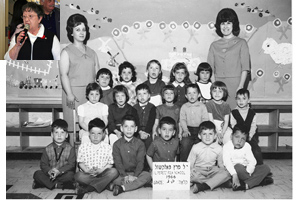
By PHYLLIS LIPSON DANA From 1941 until 1945 I lived on Mountain and Aikins and was a student from Kindergarten to Grade 4 at the Folk School, located in a 3 storey house at the corner of St Johns and Charles.
In my final year there the school merged with the I L Peretz School, which was then located in a large building on Aberdeen just west of Salter. We had moved to a house on Lansdowne Avenue east of Main so I attended Luxton School by day and went to Peretz evening classes for two years. By then our family had joined the Shaarey Zedek on Dagmar Street, so I continued my Jewish education there at the Sunday School, and began to sing with the synagogue choir.
As I recall, the Folk School had a strong Zionist perspective. Many older students were members of Habonim, which met in the building. There was emphasis on the land of Israel, though the Jewish curriculum was taught mostly in Yiddish, focusing upon language, with a little bit of Hebrew being taught, and there was a significant celebration of Jewish holidays and festivals. I retain many happy memories of my years there. The school population was quite small. In my class were only nine students (Pearl Ash, Elliot Berman, Victor Chernick, Ronald Ganetsky, Sheila Naimark, Hersh Shapera, Barbara Sherebrin, Shirley Schicher, and myself). I can’t find any class pictures but I do have a picture of our kindergarten teacher, Esther Prasso sitting on the school’s steps. Other teachers I remember were Miss Bulstein (who became Mary Yukelis), Miss Kranis (who became Yetta Grysman), Mr. Lapin, Mr. Zeitlin, and Mr. Cantor (who became the principal when the merger occurred.
Since I was no older than nine when the schools merged, I had no idea at the time why the change had taken place. In retrospect, however, I do remember my mother more than once assembling items from home to donate to the “rummage sale” to raise money to buy coal. I suppose that the larger economic base of the Peretz “shool Mispoche” allowed the smaller school to continue in some form. Peretz was secular in philosophy and there were no actual prayers as part of the curriculum in the early grades when I attended. Bible studies were presented as historia (Jewish history) and, although the holiday celebrations were important, I don’t remember any mention of God in the commemorations. However, there were High Holiday services taking place in the school’s basement, which featured my Zaida Nate Lifshitz as one of the cantors. I remember a huge celebration of the end of World War II for which we were transported to the Peretz building for an assembly.
At the Shaarey Zedek I was exposed to a totally different view of Jewish education. Hebrew language was taught through the prayers, and the Bible studies definitely focused on the miracles attached to many celebrations which gave the credit where it was due. At 11 I joined the choir, so of course that meant that I became familiar with the order of Friday evening services and holidays. The synagogue on Wellington Crescent was opened in 1950 and when a junior choir was formed I was required by the choir master, Jack Garland, to join. We performed at Saturday morning services for many years. My parents were regular attendees and my brother became a frequent Torah reader there. I continued in the Shaarey Zedek choir for many years as I married and had two children.
When each of our children were five years old, I truly believed that they were the perfect age. In my experience children at five were adventurous, inquisitive, totally honest, highly sociable, and eager to learn. I had begun taking upgrading classes with the goal of going into Education at university, when Fay Zipman asked me if I would be interested in assisting her in her four-year-old class at Peretz School on Jefferson. I met the principal and he decided to give me a chance. The year was 1965-66 and my career was launched. Fay left teaching a year after I joined her, so I assisted Sara Green until 1969, when she moved to Vancouver.
That fall I began as the Nursery teacher and I was to assist in the kindergarten; the teacher with whom I had been working was needed to take on another class, so I was upgraded to Kindergarten teacher, learning the curriculum at night while I taught all day. I was also continuing my university education at night. The Peretz atmosphere was very family oriented with a strongly Jewish cultural approach. There were many evening gatherings with music, plays, and lectures primarily in Yiddish and always highlighting student performances. While “Shabbes” celebrations were held in the classrooms, with candles, challah and juice distributed, there were no prayers chanted. Students were taught the Hebrew language, but synagogue skills were not part of the curriculum. Some boys had Bar Mitzvahs, but many did not, and initially I never heard of girls becoming “Bat Mitzvah”. Over time the Ashkenazi pronunciations of Hebrew words was replaced by the more modern one and there was a strong focus upon Israel in celebration and song. Little by little Brachot were coming into the Friday candle-and-challah gatherings in classrooms. It seemed that most students were becoming Bar Mitzvah and some girls celebrated Bat Mitzvot.
For many years many kindergarten students rushed home for lunch and then proceeded to their neighborhood schools to attend afternoon kindergarten classes. TV did not provide much stimulation for children in the afternoon and our winters can be very cold. Over the years I met many public school teachers who complained that kids would frequently tell them they had done “that” in their morning school. In the school year 1976-77 an all-day kindergarten was begun at Peretz School and I had the privilege of initiating this concept. Soon other schools incorporated these classes as well.
In the early 80s a number of parents prevailed upon Seven Oaks School Division to begin providing a Hebrew-bilingual program. When it was implemented, registration at the north-end Jewish schools declined…there was no fee at public schools. At the same time the Board of Jewish Education was formed and when, by 1983 – as our school numbers were steadily decreasing (I had a class of only eight children that year), there was a strong movement to merge the I L Peretz Folk School with Talmud Torah.
As anticipated by the smaller school’s most loyal supporters, the Yiddish component of the curriculum became reduced over time to an occasional song being taught and “optional” Yiddish language classes being offered. The teaching of synagogue skills and assemblies in the synagogue were a major component of the Judaic curriculum as well as Hebrew language, reading and writing skills and a strong emphasis upon the land of Israel. As happened with the merger of the Folk Shul with Peretz, the larger school ideology swallowed the smaller. With the burden of teaching full-time, going to university part time, and looking after my family, I had left the Shaarey Zedek choir. Over time I sang for several years in the Rosh Pina choir and in later years with the Temple Shalom choir for High Holiday services.
I have wonderful memories of my more than 30 years teaching in the Jewish day schools, and a photo album full of pictures of most of my classes. Having visited other schools over time to observe teachers and programs, I was glad to notice that the vast majority loved children and were happy to be in kindergarten. The odd time I encountered teachers who were in the wrong place, having little patience for their students and obviously wishing they were in a higher grade. Most teachers of early childhood try to convey a feeling that “school is a happy and safe place where I can succeed”. I hope that children I have taught felt that way in my classrooms.
Ed. note: I had asked Phyllis to send me as many class pictures from her time at Peretz School as she could. She was able to send me eight pictures in total.
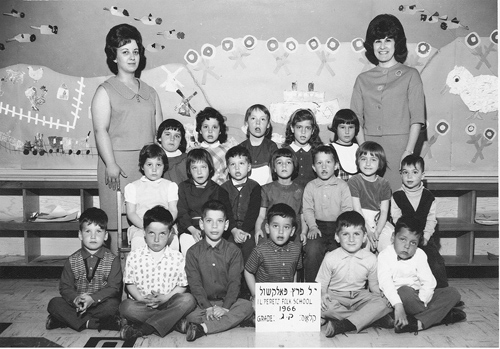
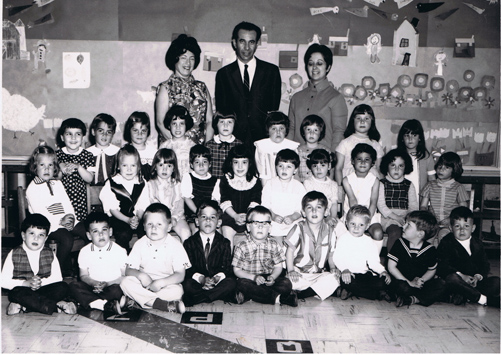
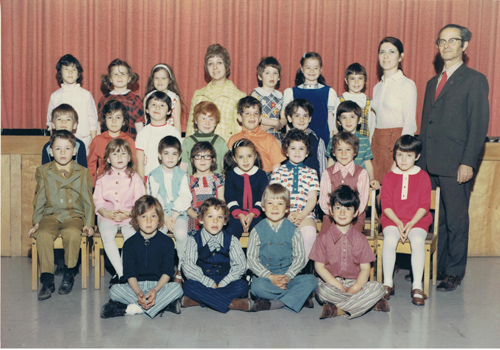
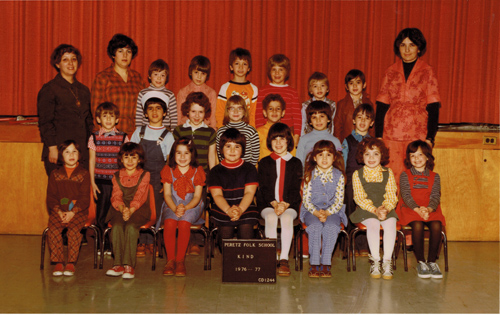
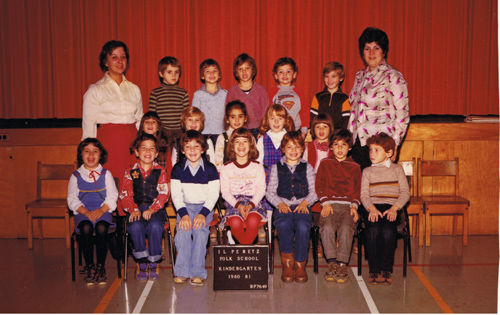
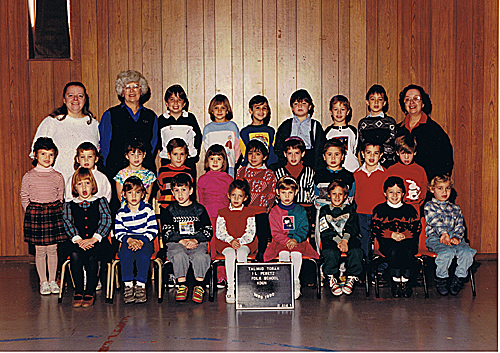


Features
Is This the End of Jewish Life in Western Countries?

By HENRY SREBRNIK “Globalize the Intifada” has been the chant echoing through streets since October 7th, 2023. It was never a metaphor, and we now see the gruesome results across the western world, from Australia to Canada: the rise of groups of large, active networks of Islamist and anti-Zionist organizations.
Jews in the West are discovering that the nations they defended, enriched, and profoundly shaped have become increasingly inhospitable. After the Holocaust, explicit Jew-hatred became unfashionable in polite society, but the impulse never disappeared. The workaround was simple: separate Zionism from Judaism in name, then recycle every old anti-Jewish trope and pin it on “the Zionists.”
We have seen the full legitimization of genocidal anti-Zionism and its enthusiastic adoption by large segments of the public. The protests themselves, as they began immediately on October 7th, were celebrations of the Hamas massacres. The encampments, the building occupations, the harassment campaigns against Jewish students, the open calls for intifada, the attacks on Jews and Jewish places have become our new norm. History shows us that antisemitism does not respond to reason, incentive or the honest appeals of the Jewish community.
Outside the United States, there is no Western political establishment with either the will or the capability to address this problem, let alone reverse its growth. I’m sorry to say this, but the future of Western Europe, Canada, Australia, and New Zealand is likely to be increasingly Jew-free.
Today, police stand and watch mobs chant for Israel’s destruction, call for the genocide of its people, harass visibly Jewish citizens, and drive antisemitic intimidation deep into urban life. They now believe their job is to enforce the law only if it does not risk upsetting violent constituencies. This makes Jews expendable, because defending them risks confrontation. This was very clear in the Bondi Beach massacre.
Jews are again donning caps instead of kippot, dressing generically with no cultural markers, and avoiding even a tote bag with Hebrew on it. A corrosive creep toward informal segregation in retail and service sectors is occurring, as Jewish customers report being refused service. A mezuzah hanging from a rideshare mirror leads to cancellations. When Jews express frustration, they are accused of exaggeration or attempting to suppress criticism of Israel. Jewish fear is not treated as a real problem.
“Jews Are Being Sent Back into Hiding,” the title of a Dec. 15 article in the New York Free Press by David Wolpe and Deborah Lipstadt, asserts that the attacks on Jews, including physical assaults, social media campaigns and, most tragically, the recent murders in Australia, are part of a purposive campaign designed to make Jews think twice about gathering with other Jews, entering a synagogue, going to kosher restaurants, putting a mezuzah on the doorpost of their apartments or dorm rooms, or wearing a Jewish star around their necks.
“We know of no one who would consider giving a niece, nephew, grandchild, or young friend a Jewish star without first asking permission of their parents,” they write. The unspoken, and sometimes spoken, question is: “Might wearing a star endanger your child’s well-being?”
Recently, a prominent American rabbi was entering a Target store in Chicago with her grandson, whom she had picked up from his Jewish day school. As they walked into the store the 10-year-old reached up and automatically took off his kippah and put it in his pocket. Seeing his grandmother’s quizzical look, he explained: “Mommy wants me to do that.”
Borrowing a phrase from another form of bigotry, they contend that Jews are going “back into the closet.” No public celebration of Hanukkah took place in 2025 without a significant police presence. Some people chose to stay home.
Lipstadt and Wolpe know whereof they speak. They are respectively a professor of history and Holocaust studies who served as the Biden administration’s ambassador tasked with combating antisemitism, the other a rabbi who travels to Jewish communities throughout the world, and who served on Harvard’s antisemitism task force in the aftermath of the October 7, 2023 pogrom.
What the world has seen over the past two years is a continual, often systematic attempt to terrorize Jews. When political leaders fail to condemn rather than merely “discourage” chants of “globalize the intifada,” we are seeding the ground for massacres like the Hannukah one in Sydney.
If each Jewish holiday will now be seen by antisemites as an opportunity for terror, then the prognosis for diaspora Jewry is bleak. There will be fewer public events, more alarms, more bag checks at doors; there will have to be more security and more police. Unless things change, Jewish life in the diaspora will become more sealed off from the larger society.
Why has this failure come about? Confronting antisemitism, stopping the mobs, challenging the activists, and disciplining antisemitic bureaucrats all carry electoral risk for politicians; Jews are demographically irrelevant, especially compared with Muslim voters, with the U.S. being the only partial exception.
There are those who suggest Jews stop donating funds to educational and other institutions that have turned against us. At this point, I doubt very much that withdrawing dollars will have an impact. For every dollar withdrawn, there will be 100 from Qatar and other sources in its place.
Throughout history, the way a society treats its Jews predicts its future with unerring accuracy. If Jews leave, it will be because a civilization that will not defend its Jews will also defend next to nothing and may itself not survive.
Henry Srebrnik is a professor of political science at the University of Prince Edward Island
Features
Canadian Travel Trends 2025 and the Forecast for 2026

Canadians planning to travel in 2026 should keep an eye on shifting trends and learn what’s coming their way in the new year.
Canadian travel has seen a fair amount of change and instability over the last few years, thanks mostly to the country’s southern neighbours. In 2025, and likely into 2026, travel trends in the Great White North have stabilized significantly, with more Canadians than ever choosing to travel within their own borders. And with 2026 nipping at our heels, let’s take a look at what trends in 2025 have been the most prevalent and how these will shape travellers’ decisions and travel plans in the new year.
Canadian Travel in 2025
Thanks to many factors, including politics, inflation, and airline competition, the majority of travellers opted to explore their own country rather than go abroad in 2025. More local travel money is remaining within the local economy, further bolstering it and making it an even more attractive travel choice. Thanks to the accessibility of private jet charter travel across Canada, luxury local travel has increased as well, with more people looking to immerse themselves in luxury from the start of their journey to the end. When travelling abroad, the U.S. is now the least favoured destination for most Canadian travellers, but Europe saw a significant increase in interest as 2025 progressed.
As local Canadian travel increased this year, it brought with it a drive for local tourists to find their own “Secret Canada” destinations. Far more “off the beaten path” trips were taken, resulting in more travel spending going to smaller or more boutique destinations rather than big city experiences. In 2025, travellers have sought out the wonderful diversity in destinations and landscapes, allowing themselves to access more grounded and authentically Canadian experiences.
Canada’s Government has also encouraged and benefited from local tourism, with initiatives like the Canada Strong Pass offering extra benefits. Initially implemented in the summer, but reintroduced from December 12, 2025, until January 15, 2026, this is a ticket to enjoying the richness of their own culture (iconic natural destinations, museums, train trips) at a discounted rate or even in some cases free of charge.

In the second quarter of 2025, locals took a total of 90.6 million trips that included at least some time spent travelling domestically, which indicated a rise of 10.9% on a year-over-year basis. Of these trips, 58.6 million were day trip experiences (an increase of 12.4%), and 32.0 million were overnight trips or longer (an increase of 8.4%).
Between April and June of this year, Canadian residents spent $20.3 billion on local tourism, which represented a 13.5% year-over-year increase. When undertaking day trips, Canadians spent approximately $101 per visit. On overnight trips, locals spent around $449 per trip, with an average trip length of 2.6 nights. The Great White North is clearly holding its own, and then some, in the international travel market.
Canadian Travel in 2026
As we move towards 2026, many trends from 2025 will remain the standard, but some will evolve to fit changing demands. Across the board, though, the outlook for the coming year is that Canadian travel will become a far more personal thing, with trips being customized to fit travellers’ requirements and desires more closely than ever before. From choosing a hotel that they feel smacks of a beloved destination in their favourite novel, to taking a trip to a destination just to try a snack that’s famously made there and only there, travel is stretching and shifting for the traveller rather than the other way around.
Here are some slightly more specific predictions for the coming year based on the answers of polled Canadians.

- One Gen Z-led trend is the idea of “glowmad travel”. Beauty and skincare are now influencing the places that Gen Z travels, and their trips are far more likely to include visits to skincare and beauty destinations like spas and luxury stores.
- Gen Z adults are helping to drive another trend: family travel as a way to save money. 345 of Gen Z adults polled say that they would take this route.
- More than 70% of Canadians are considering some sort of mountainous getaway in 2026, specifically in summer or autumn.
- 48% of polled Canadians say they would book or consider a destination thanks to the influence of literature.
- More travellers than ever are choosing their destinations based on the accommodations available. 44% of polled travellers say that in 2026, accommodation and what it can offer comes first, and the surrounding destination comes second.
The World Is Your Nova Scotia Lobster Roll
Choose something a little different when you vacation this year. Oysters are great, but a Nova Scotia lobster roll might be more to your taste! Canadians know good travel, so take a maple leaf out of their book and experience something new this year.
Features
Fake IDs and Underage Bettors: The Growing Problem for Sportsbooks
The expansion of legalized sports betting worldwide has resulted in sportsbooks grappling with a problem that they can no longer overlook: the increase in underage individuals using counterfeit identification to place bets. As more and more ways to bet through mobile apps and online sign-ups emerge, minors who are set on their goal are inventing ways to get around age limits. The emergence of this trend is a breach of the law and morality; however, it is also an enormous problem that threatens the very existence of the platforms, which are forced to rigorously obey the regulations .
Why Fake IDs Are Becoming More Sophisticated
Conventional fakes used to be quite simple to recognize—low-quality printing, different fonts for the text, and inconsistent holograms would make them not very reliable for any kind of verification. But counterfeit documents have changed significantly over time. Nowadays, fakes are made better with the help of printing technology and software, and they can even copy barcodes and other scannable features, so their IDs look almost real.
This fact complicates things significantly for sportsbooks, especially those operating online. Most of the time, automated identity verification systems capture a user’s photo and perform basic data matching. In cases where a very good fake ID is used by a teenager who looks older, some systems cannot recognize the trick. Therefore, young bettors have found ways to be able to place wagers through these loopholes.
The Influence of Social Pressure and Online Culture
Social media is a major factor in the increase in risky behavior that minors are engaging in. On various platforms such as Instagram, TikTok, and Reddit, teenagers come across betting slips, parlay wins, and big-payout screenshots that are shared, most probably, by other users. The glamorization of sports betting is leading young people to copy the behavior of influencers, older friends, or even celebrities, as they think that it is the right thing to do.
The competitiveness usually associated with sports is one of the reasons some minors decide to bet on sports. For many, betting becomes another way to engage as a fan—by predicting outcomes, challenging friends, and experiencing the same excitement that adult fans enjoy. Unfortunately, only a small number of minors fully understand the financial risks involved, making them more vulnerable to developing harmful patterns that could continue into adulthood. This is why choosing the most responsible sportsbook, which you can discover more here, is essential. Such platforms provide guidance, enforce safe practices, and ensure regulated play, allowing fans to engage with sports betting in a more informed, secure, and controlled manner.
Sportsbooks Facing Regulatory Pressure
The sportsbooks are being given the task of more closely monitoring and preventing minors from betting on their platforms. If they fail, harsh penalties are possible, including severe fines, loss of a gambling license, and negative publicity that undermines a brand’s trustworthiness. As a result, it is becoming increasingly difficult for people to verify their identities, although this also inconveniences those who are, in fact, legitimate users.
Sportsbooks have to decide between two options that are in conflict with each other: on the one hand, they have to keep the registration process as simple as possible, and on the other hand, they have to carry out age verification in a very thorough manner. The work of balancing is tough, and the underage gamblers are trying all methods to find a way out.
The Rise of Identity Fraud Services
An alarming trend is the emergence of online vendors who openly advertise fake IDs and identity documents. These vendors often claim their products can pass standard sportsbook checks. Some even tailor IDs to specific regions, knowing that certain provinces, states, or countries use verification systems that rely heavily on image comparison rather than live validation.
The availability of these fraudulent services not only empowers minors but also exposes sportsbooks to risks related to stolen identities, money laundering flags, and fraudulent accounts that may later become legal liabilities.
The Consequences for Underage Bettors
While a minor might think that gambling is just a bit of fun without any harm, the outcome can be quite serious. If there is a catching, accounts are closed right away, winnings are confiscated, and parents or guardians, in some cases, are made legally liable for any financial disagreements. Besides that, the risk of developing a gambling problem in the future increases with early exposure to gambling, especially since teenagers are more impulsive and less capable of handling financial risks.
The majority of minors are not aware that sportsbooks keep very detailed records of their activities, including device information and IP addresses. In case a fake ID works one time, using it multiple times will definitely lead to getting caught.
A Growing Problem That Requires Joint Action
Fake IDs and underage betting are issues that have become a major challenge in the industry, and no single stakeholder can solve these problems on their own. Sportsbooks need to enhance their identity verifications, regulators should get prepared for new types of fraud, technology providers have to come up with new solutions more quickly, and parents should always be aware of what their children are doing online. The industry’s rapid development is making this problem more and more urgent because the number of minors trying to get around the safety measures is increasing.
Sports betting can serve as a fun and legal form of entertainment for adults, but the need to protect the youth is what defines the industry and ensures its survival in the long run. As the quality of fake IDs keeps improving and the online culture is more and more inclined to consider betting as a normal activity, sportsbooks must ensure that underage users do not have access and that the environment is safe for all users. They need to do this now more than ever.

